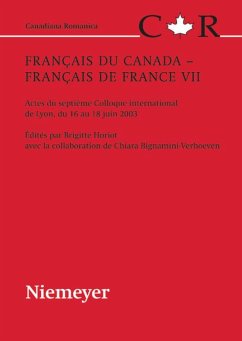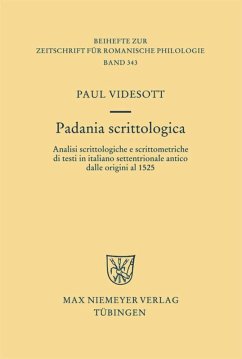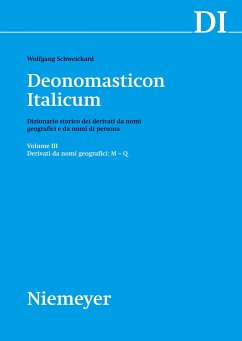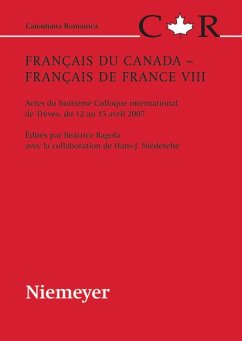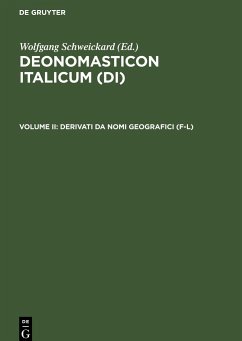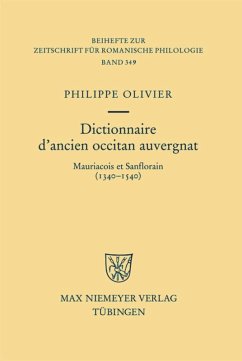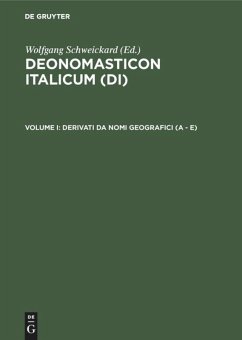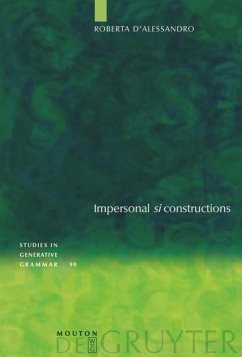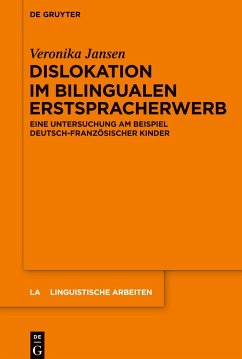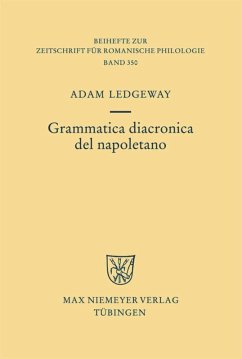
Grammatica diacronica del napoletano

PAYBACK Punkte
146 °P sammeln!
A rich and long literary tradition (dating back as early as the late 13th century), coupled with an abundance of diachronic and synchronic variation, affords Neapolitan a privileged position amongst the Romance languages,offering the Romance linguist a rare opportunity to explore the structural evolution of one of the lesser known Romance varieties. Yet, while evidence from other Romance languages and dialects has had a profound influence on the development of theoretical issues relating to language structure, variation and change, references to Neapolitan are conspicuous by their absence, simply because the relevant facts are not widely known or have not been analysed in sufficient detail for their theoretical significance to be assessed. As a consequence, the potential significance of Neapolitan for both Romance linguistics and linguistic theory in general has been largely overlooked in the literature.
The present volume aims to rectify this situation by providing an extensive documentation and in-depth diachronic description of Neapolitan phonology, morphology and syntax which is comprehensive enough to qualify as a reference grammar but which is formulated within a conceptual frame-work which allows individual facts to be studied as part of a coherent system and compared with other Romance languages. In this respect, the results of the investigations offer a valuable insight into the little studied structure of Neapolitan, while making a significant contribution towards cataloguing the linguistic typology of dialects within the Italian peninsula and, at the same time, bridging the gap between the familiar data of standard Romance and those of lesser known Romance varieties.
The present volume aims to rectify this situation by providing an extensive documentation and in-depth diachronic description of Neapolitan phonology, morphology and syntax which is comprehensive enough to qualify as a reference grammar but which is formulated within a conceptual frame-work which allows individual facts to be studied as part of a coherent system and compared with other Romance languages. In this respect, the results of the investigations offer a valuable insight into the little studied structure of Neapolitan, while making a significant contribution towards cataloguing the linguistic typology of dialects within the Italian peninsula and, at the same time, bridging the gap between the familiar data of standard Romance and those of lesser known Romance varieties.
Una ricca e lunga tradizione letteraria risalente al tardo Duecento, nonché una notevole abbondanza di variazione diacronica e sincronica, conferiscono al dialetto napoletano una posizione privilegiata tra le lingue romanze, offrendo al romanista una preziosa occasione per esplorare l'evoluzione strutturale di una delle varietà romanze meno studiate. A differenza dei dati empirici di altre varietà romanze che hanno spesso contribuito all'indagine e alla rivalutazione di idee e di ipotesi circa questioni riguardanti la struttura linguistica, la variazione tipologica e il mutamento linguistico - sia in chiave prettamente romanza che in chiave più generale - l'importanza dei dati napoletani rispetto ai temi ora ricordati è invece passata quasi sotto silenzio, perché i dati in questione o non sono generalmente noti o non sono stati oggetto di analisi sufficientemente approfondite per ottenere una corretta valutazione della loro rilevanza comparativa e/o teorica.
L'obiettivo principale della presente opera consiste perciò nel colmare le lacune individuate sopra attraverso una ricca documentazione e un'approfondita descrizione storica della fonologia, morfologia e sintassi del napoletano. Il risultato è una descrizione che risulta sufficientemente comprensiva da potersi qualificare come una grammatica di consultazione e, al contempo, formulata secondo un'impostazione che agevoli lo studio in diacronia e in sincronia di fatti individuali come parte di un sistema coerente, nonché il loro confronto con altre varietà (italo)romanze.
L'obiettivo principale della presente opera consiste perciò nel colmare le lacune individuate sopra attraverso una ricca documentazione e un'approfondita descrizione storica della fonologia, morfologia e sintassi del napoletano. Il risultato è una descrizione che risulta sufficientemente comprensiva da potersi qualificare come una grammatica di consultazione e, al contempo, formulata secondo un'impostazione che agevoli lo studio in diacronia e in sincronia di fatti individuali come parte di un sistema coerente, nonché il loro confronto con altre varietà (italo)romanze.





